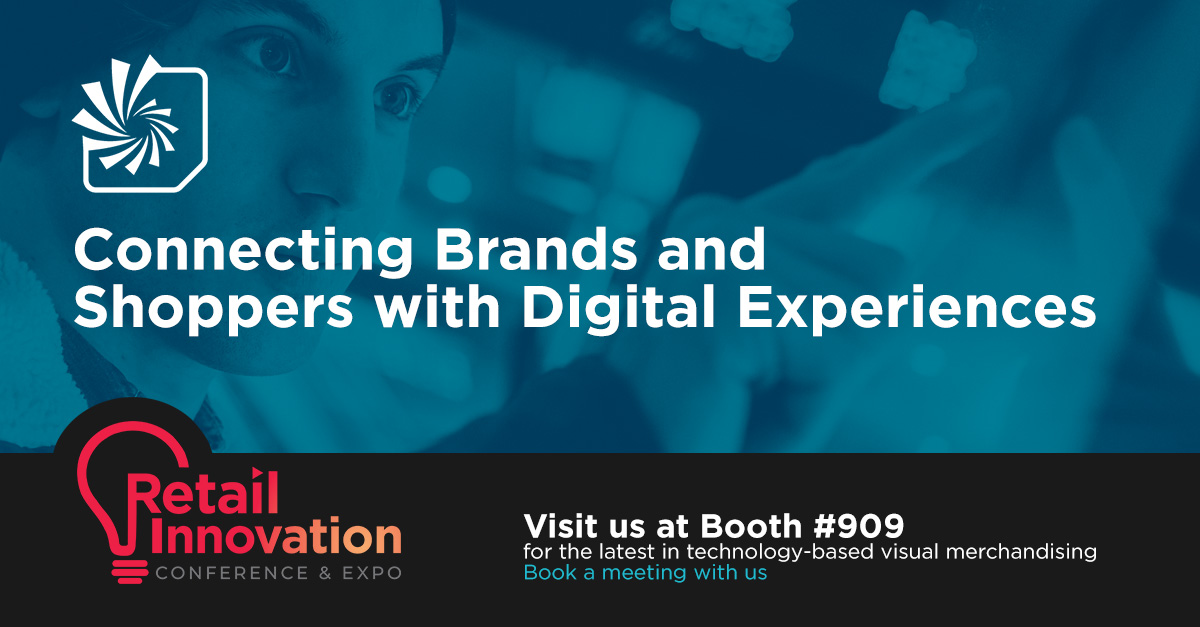Defining the role of mobile across the digital signage journey: why it matters
You don’t have to be a researcher to know that Americans are attached to their smartphones. On average, we spend just under six hours per day on our mobile devices. We check them approximately 96 times per day or once every ten minutes.
It makes sense, then, that digital signage experts and the marketers who engage them are paying close attention to how to leverage our smartphones, giving rise to innovative strategies that combine mobile technology and the in-store or on-premise / in-venue experience.
In recent years, several innovative advertising campaigns have effectively leveraged mobile technology to transform the way physical stores and brands interact with their customers. One notable example is Starbucks' "Mobile Order and Pay" campaign. This feature allowed customers to order ahead through the Starbucks app, enabling them to skip waiting in-store. This campaign not only provided unparalleled convenience but also responded smartly to the global pandemic's social distancing requirements — and it has become one of the most common ways for people to order now at Starbucks across the states.
In today’s blog, we’ll explore the best practices, common pain points, considerations and solutions associated with merging what’s in the customer’s hands [e.g., a mobile device] and the screens or technology [e.g., digital signage] used to engage them.
Best practices in mobile integration: enhancing connectivity and interactivity
One of the best practices in mobile integration is ensuring seamless connectivity between mobile platforms and digital signage displays. Interactivity can be encouraged by leveraging mobile sensors. Incorporating features like NFC (Near Field Communication) and QR codes can allow businesses to facilitate direct engagement between mobile devices and digital signs. This not only provides a personalized and more frictionless or hands-free experience but also opens avenues for real-time data collection and analytics.
Businesses should also aim for a unified brand experience across different channels— consistent messaging, branding elements and content synchronization—so that what’s being displayed on the mobile and digital signage components complement each other seamlessly.
Expected impact across various sectors: a paradigm shift in communication
The impact of maximizing mobile integration in the digital signage ecosystem extends across diverse sectors, revolutionizing the way an array of enterprises can communicate with their audiences.
Retail: retailers can leverage mobile integration to create personalized and interactive in-store experiences. Mobile devices can serve as interactive guides, offering product information, promotions and personalized recommendations based on customer preferences. Integration with digital signage enhances the overall shopping experience, fostering customer loyalty. After all, a shopper and guest already have a device in hand that’s native and familiar to them, and also – safe, which became increasingly important throughout the pandemic.
Hospitality: In the hospitality sector, mobile integration with digital signage transforms guest services. Mobile devices can act as virtual concierges, providing both access to rooms and VIP areas, as a way to deliver information on amenities, local attractions and personalized notifications. Digital signage in lobbies and common areas complements this by displaying real-time event information, weather updates and promotional content.
Education: Educational institutions can utilize mobile integration to streamline communication and engagement. Mobile apps can provide students with timely announcements, event schedules and campus maps. Digital signage in common areas can reinforce this information and showcase dynamic content, fostering a sense of community on campus.
Corporate: In corporate settings, mobile integration with digital signage enhances internal communication. Mobile apps can deliver real-time updates, corporate announcements and employee recognition and emergency alerts. Digital signage in common areas and meeting spaces reinforces this information, creating a cohesive and informed corporate environment.
Healthcare: In healthcare, mobile integration and digital signage contribute to an improved patient experience. Mobile apps can offer appointment reminders, wayfinding assistance and health education materials. Digital signage in waiting areas provides real-time updates and health information and promotes wellness initiatives.
Transportation: The transportation sector benefits from mobile integration by providing real-time information to passengers. Mobile apps can offer route planning, service alerts and boarding information. Digital signage in transit hubs enhances this by displaying dynamic content, advertising and emergency notifications.
Common pain points and solutions: navigating challenges for optimal integration
While the potential benefits of mobile integration with digital signage are vast, it's an undertaking that brings some challenges with it.
One common pain point is compatibility issues between diverse mobile devices and digital signage platforms. To address this, businesses should prioritize technologies that offer cross-platform support, ensuring a uniform experience regardless of the user's device. This involves adopting responsive design practices and utilizing platforms that support a wide range of operating systems and screen sizes.
Bandwidth constraints pose another challenge, particularly in high-traffic areas. This can lead to slow loading times and decreased user satisfaction. Implementing content delivery networks (CDNs) and optimizing content for efficient data transmission can mitigate these challenges, ensuring a smooth experience even in bandwidth-constrained environments. By caching content closer to the user and utilizing compression techniques, businesses can significantly enhance content delivery speed on both mobile devices and digital signage.
Security concerns are a significant consideration when dealing with mobile integration. Transmitting sensitive information between mobile devices and digital signage systems requires robust encryption and authentication measures. Implementing secure protocols and regularly updating security measures are crucial in safeguarding against potential threats. This includes using industry-standard encryption protocols for data transmission and ensuring that both mobile and signage systems are compliant with data protection regulations.
Content relevance is another common pain point, as static content can quickly become stale. Leveraging dynamic content management systems (CMS) that allow real-time updates based on user behavior, location, or time can keep the content fresh and engaging. For mobile integration, this means utilizing data from mobile devices, such as location services, to tailor content on digital signage to the audience currently viewing it. For example, a retail store can display promotions or product information relevant to the sections of the store that are currently experiencing the highest foot traffic, as indicated by mobile location data. Additionally, integrating social media feeds or user-generated content can add a dynamic and personalized element to digital signage, further enhancing relevance.
In the pocket: meeting your audience where they’re at is the only way forward
Maximizing mobile integration within the digital signage ecosystem marks a significant shift in how businesses engage with their audiences. It's not merely an advancement in technology; it's a fundamental change in communication strategy.
Smartphones have become an integral part of people's daily lives. Integrating mobile technology with digital signage allows businesses to meet consumers where they are, both physically and digitally, by tapping into their daily interactions. This strategy not only enhances the relevance of the content but also deepens the engagement with the audience, making it a vital component in the evolving landscape of customer communication.
Whether you’re a digital signage buyer, integrator, consultant or manufacturer, next time you’re thinking about your visual merchandising or on-premise / in-store journeys – give thought to the relationship between the small screens in one’s hand, to the broader engagement objective of the physical or digital environment it can hook in to. This is how we move from individual, isolated experiences to ones that are far more thoughtful, integrated, helpful and connected.
Share this
You May Also Like
These Related Stories

What's the Future of Interactive Experiences? (Part 2)
.jpg)
Digital Signage Can Handle Customer Service in a Tight Labor Market


